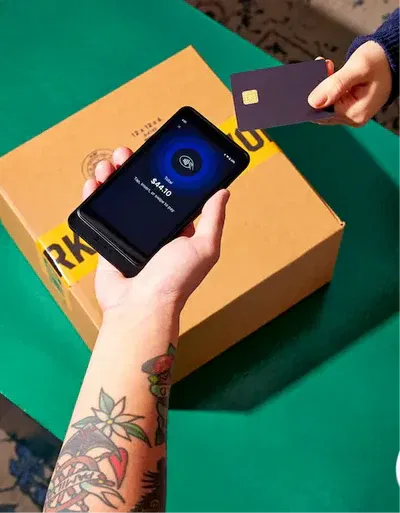Best Web App Template Options to Kickstart Your Project
15 Best Web App Template Designs to Launch Your Application with Confidence in 2025
Have you ever had an app idea that you were dying to launch but got stuck trying to build the website or user interface from scratch? You’re not alone. Whether you’re a solo entrepreneur, part of a startup, or just someone testing out a new idea, building a solid frontend and backend takes serious time and skill.
That’s where a web app template comes in.
Instead of building from the ground up, a web app template offers you a ready-made framework to speed up development and ensure a beautiful, functional user experience right out of the box. These templates are mobile responsive, customizable, SEO-friendly, and often include UI components, pre-built pages, and more.
In this guide, I’ll introduce you to the 15 best web app template options for 2025. You’ll learn what makes each one unique, how it fits different use cases, and what features to look for when selecting the right web based application template for your project.
| Template Name | Framework / Tech Stack | Free / Paid | Responsive | SEO Ready | Auth Support | Best For |
|---|---|---|---|---|---|---|
| Material Dashboard | Bootstrap / Material UI | Free | Yes | Yes | No | Admin dashboards |
| Vuexy | Vue.js / Laravel | Paid | Yes | Yes | Yes | Analytics, CRM, eCommerce |
| Nextly | Next.js / Tailwind CSS | Free | Yes | Yes | Yes | SaaS startups |
| Mosaic Lite | Alpine.js / Tailwind CSS | Free | Yes | Yes | No | Admin dashboards, internal tools |
| DashCode | Multi-framework | Paid | Yes | Yes | Yes | Versatile web apps |
| Shards Dashboard Lite | React / Bootstrap 4 | Free | Yes | Yes | No | Admin panels |
| Skote | Node.js / Laravel | Paid | Yes | Yes | Yes | Enterprise-grade applications |
| Notus React | React / Tailwind CSS | Free | Yes | Yes | Yes | CRMs, dashboards |
| AdminKit | Bootstrap 5 | Free | Yes | Yes | No | Operational dashboards |
| Open PRO | Tailwind CSS | Paid | Yes | Yes | Yes | SaaS marketing + auth pages |
| Volt Dashboard | Bootstrap 5 | Free | Yes | Yes | No | Developer dashboards |
| Metronic | Angular, Vue, React, Laravel | Paid | Yes | Yes | Yes | Large enterprise apps |
| Frest | Bootstrap Vue | Paid | Yes | Yes | Yes | SaaS + admin UI |
| Materialize | Materialize / SASS | Free | Yes | Yes | No | Google-style UIs |
| AdminLTE | jQuery / Bootstrap | Free | Yes | Moderate | No | Community-based admin templates |
1. Material Dashboard by Creative Tim
Best For: Admin panels and dashboards
- Material UI design system
- Fully responsive
- Dark mode support
- Includes over 60 UI components
Why it’s awesome: This web app template is ideal if you’re building a SaaS product or backend admin area. Clean design, Google’s Material standards, and Bootstrap compatibility make it developer-friendly.
2. Vuexy
Best For: Vue.js or React developers
- Built using Vue.js & Laravel
- Advanced charts and widgets
- Integrated eCommerce support
- Includes both HTML & full-stack versions
Vuexy is a comprehensive application website template that’s great for analytics apps, dashboards, or even customer portals.
3. Nextly – Tailwind & Next.js SaaS Template
Best For: SaaS startups
- SEO optimized with structured schema
- Built on Next.js and Tailwind CSS
- Simple authentication integration
- Includes blog and pricing pages
Perfect for fast prototyping, this web based application template helps you launch quickly with optimized speed and modern UI/UX.
4. Mosaic Lite
Best For: Open-source admin apps
- Fully responsive
- Alpine.js + Tailwind CSS
- Dark mode
- Clean, modular components
Use Mosaic Lite when you want a free yet robust web app template for dashboards or internal tools.
5. DashCode
Best For: Developers wanting a versatile frontend
- Supports multiple frameworks
- eCommerce, SaaS, and analytics modules
- RTL support for global reach
It’s a multipurpose web app template with fantastic documentation and visual consistency.
6. Shards Dashboard Lite
Best For: Bootstrap developers
- Modern, minimalist design
- Uses React + Bootstrap 4
- Easy integration with APIs
This application website template keeps things lightweight and focused on usability. Great for admin or analytics dashboards.
7. Skote
Best For: Node.js & Laravel developers
- Multiple language support
- Built-in authentication
- Custom icons
Skote is a premium web app template that works well for enterprise-grade applications with scalable architecture.
8. Notus React
Best For: React devs who want flexibility
- Tailwind CSS integration
- Fully documented
- Customizable layout blocks
Whether you’re building a marketplace or a CRM, Notus offers the flexibility needed in a modern app website template.
9. AdminKit
Best For: Internal tools and reports
- Based on Bootstrap 5
- Modular components
- Downloadable SCSS and JS files
It’s a good starter web app template for businesses that need operational dashboards without bloat.
10. Open PRO by Cruip
Best For: SaaS landing pages
- Tailwind CSS
- Light/dark themes
- Marketing sections
This web based application template comes with pre-built marketing and login pages—perfect for pre-launch validation.
11. Volt Dashboard
Best For: Developers who want clean design
- Bootstrap 5 support
- Over 100 UI components
- Custom-built icons
Volt simplifies the web app template setup with its intuitive layout and speed-first design.
12. Metronic
Best For: Enterprise apps and multi-project scalability
- Supports Angular, React, Vue, and Laravel
- Massive component library
- Built-in CRM and HR modules
For large-scale deployment, Metronic offers a powerhouse application website template.
13. Frest
Best For: Clean, responsive UI/UX
- Built with Bootstrap Vue
- Drag-and-drop ready
- Offers RTL support
Use this app website template for clean SaaS apps or admin panels.
14. Materialize
Best For: Google Material design enthusiasts
- Responsive framework
- SASS and Gulp integration
- Starter templates included
Materialize is a full-featured web based application template great for anyone following Google’s UI guidelines.
15. AdminLTE
Best For: Open-source fans
- Massive community support
- Tons of widgets
- Easy plugin integration
This free web app template is beloved by the open-source community. Perfect for developers on a budget.
Why Use a Web App Template?
Here are the key reasons:
- Faster Time to Market: No need to design from scratch.
- Responsive by Default: Most templates are mobile-ready.
- Scalable Architecture: Many support frameworks like React, Vue, or Angular.
- UI Consistency: Templates are built with design systems.
- SEO Optimization: Built-in features like schema markup and fast loading improve search rankings.
- Google Lighthouse
- Tailwind CSS Documentation
How to Choose the Right Web App Template
- Tech Stack Compatibility: Choose based on your dev language (React, Vue, etc.)
- UI Design Preferences: Light vs. dark theme? Material Design or something custom?
- Business Requirements: Do you need charts, login, or marketing pages?
- Performance and SEO: Page speed and markup matter
- Ease of Customization: Look for drag-and-drop builders or Tailwind utility classes
Suggested Table: Feature Comparison
| Template | Framework | Free / Paid | Responsive | SEO Ready | Includes Auth |
|---|---|---|---|---|---|
| Material Dashboard | Bootstrap | Free | Yes | Yes | No |
| Vuexy | Vue / Laravel | Paid | Yes | Yes | Yes |
| Nextly | Next.js | Free | Yes | Yes | Yes |
| Metronic | Multi | Paid | Yes | Yes | Yes |
| AdminLTE | jQuery / Bootstrap | Free | Yes | Moderate | No |
🔍 Top 15 Frequently Asked Questions About Web App Templates
1. What is a web app template, and how can it benefit me?
A web app template is a pre-designed framework used to build modern web applications quickly. Instead of starting from scratch, developers can utilize these templates to speed up the process of creating dashboards, landing pages, admin panels, or full SaaS platforms.
These templates often come with pre-styled components, responsive layouts, SEO features, and cross-browser compatibility. For anyone creating a web-based product, using a web app template helps reduce time-to-market, enhances user experience, and ensures design consistency.
2. What is the difference between a web app template and a web based application template?
While the terms are often used interchangeably, there’s a subtle difference in focus. A web app template usually refers to any pre-built layout or UI kit intended for web applications—whether it’s admin dashboards, SaaS platforms, or data-driven tools.
A web based application template, on the other hand, emphasizes templates designed specifically for browser-based functionality. This could include CRMs, scheduling apps, online booking systems, or project management tools accessed via the internet.
Both are structured similarly, but the second term is more function-centric and is often used in enterprise or business-oriented projects.
3. Are web app templates responsive across devices?
Yes, responsiveness is a standard feature in almost all modern web app templates. Whether you’re using Bootstrap-based designs, Tailwind CSS frameworks, or other utilities, these templates are made to adapt fluidly to different screen sizes—desktops, tablets, and mobile phones.
Responsiveness is vital not just for user experience but also for SEO rankings. Google prioritizes mobile-friendly websites, so when you use a well-coded application website template, you ensure your users get the best viewing experience on any device.
4. What are the best frameworks to use with a web app template?
The most popular frameworks and technologies compatible with web app templates include:
-
React.js – Great for dynamic UIs and SPAs
-
Vue.js – Lightweight and flexible
-
Angular – Robust for large-scale applications
-
Next.js – Ideal for server-side rendered apps with SEO advantages
-
Tailwind CSS – Utility-first CSS framework for design consistency
-
Bootstrap – Widely supported and easy to use
Depending on your tech stack and project goals, many templates are available in multiple formats or are framework-agnostic.
5. Can I customize a web app template to match my brand?
Absolutely. Most web app templates are highly customizable. They often come with modular CSS or SCSS files, UI components, layout variants, and customizable variables.
Whether you need to change colors, fonts, logos, or overall layouts, these templates make it easy—even for developers with minimal design experience. Some even include drag-and-drop builders to make customization easier.
If you’re building a branded app website template, customization is key to delivering a cohesive experience that reflects your identity.
6. Are these templates good for SEO?
Yes, many high-quality web app templates are built with SEO in mind. Key SEO features often include:
-
Optimized HTML structure
-
Semantic tags and headings
-
Fast load times
-
Image compression support
-
Schema markup for rich results
-
Clean URLs
Whether you’re creating a landing page with an application website template or a full-stack SaaS UI, a properly optimized template improves crawlability and helps your application rank in search engines.
7. Do web app templates support user authentication and login systems?
Many web app templates—especially those built for SaaS or dashboard purposes—come with basic login, registration, and authentication modules. These may include:
-
Email/password login
-
Social login (OAuth)
-
Password reset functionality
-
Session/token-based access
Some templates offer integration-ready components that work with Firebase, Auth0, or custom backends. It saves developers time when building secure applications.
8. What is an app website template used for?
An app website template is designed to promote or support a mobile or web application. It typically includes:
-
Hero sections with screenshots or demo videos
-
Feature highlight sections
-
Pricing tables
-
Testimonials or case studies
-
FAQs and support CTAs
This kind of application website template is perfect for SaaS businesses, mobile apps, or any digital product needing a marketing website. It blends informative content with conversion-driven design.
9. Can I use web app templates for eCommerce applications?
Yes, many web app templates support eCommerce functionality either natively or via plugin integrations. Key features include:
-
Product cards
-
Cart and checkout flow
-
Payment gateway compatibility
-
Inventory dashboards
-
Customer management
If you’re building a storefront or marketplace, select a web based application template that’s eCommerce-ready or compatible with platforms like WooCommerce, Shopify, or Stripe.
10. How do I choose the best web app template for my needs?
When choosing a web app template, consider these factors:
-
Framework Compatibility: Does it align with your tech stack?
-
Purpose Fit: Is it for a dashboard, marketing site, or full SaaS platform?
-
SEO and Speed: Is it optimized for performance?
-
Design Style: Does it match your branding vision?
-
Customization Options: How easy is it to tailor the template?
Define your use case—whether it’s for a data-rich dashboard or a lean app website template—and filter based on functionality.
11. Are web app templates beginner-friendly?
Yes, especially those that use WordPress, Bootstrap, or drag-and-drop builders like Elementor or Webflow. Even beginners with minimal coding knowledge can customize layouts, add content, and configure settings using visual interfaces.
If you’re using React or Vue, some familiarity with JavaScript is helpful, but documentation and community support make the process manageable.
Templates labeled as “starter kits” or “lite versions” are often great entry points.
12. How secure are web app templates?
The security of a web app template depends largely on how it’s implemented. While templates themselves include frontend elements, they may offer basic protection such as:
-
HTTPS compatibility
-
Input validation scripts
-
Token-based authentication interfaces
For full security, always implement proper backend validation, authentication, and API protection. Think of templates as design + frontend functionality, not full-stack protection.
13. Can I use one template for multiple projects?
It depends on the license. Many free web app templates allow multiple-use under MIT or GPL licenses. Premium templates, however, might restrict usage to a single domain or project unless you purchase an extended license.
Always check the terms and conditions. For agencies or startups building for multiple clients, multi-use licenses or open-source templates are ideal.
14. How do I test the performance of my chosen template?
Performance testing is crucial. Use tools like:
These tools analyze:
-
Load speed
-
Image optimization
-
Render-blocking resources
-
Cumulative layout shift (CLS)
Choose a web based application template that scores well to ensure smooth UX and SEO compliance.
15. Where can I find the best web app templates in 2025?
Some of the best marketplaces and platforms for discovering high-quality web app templates include:
-
ThemeForest / Envato Market: Extensive collection with filters
-
Creative Tim: Offers premium dashboards and UI kits
-
WrapPixel: Specializes in Bootstrap templates
-
Cruip: Tailored for startups and SaaS
-
Webflow Templates: Visual, no-code options
-
GitHub: For open-source community-built templates
You’ll find templates for every use case—from sleek application website templates to powerful admin panels—so filter by your preferred framework and feature set.
Final Thoughts
Choosing the right web app template can save you hundreds of hours of work while delivering a beautiful and functional user experience. Whether you’re launching a SaaS product, building an admin dashboard, or validating a startup idea, a solid application website template gives you the head start you need.
Make sure to pick a web based application template that fits your framework, performance needs, and brand style. Want something modern and fast? Go with Tailwind and Next.js. Looking for a scalable enterprise tool? Try Metronic.
No matter your goal, a great web app template is the foundation of a great user experience.




